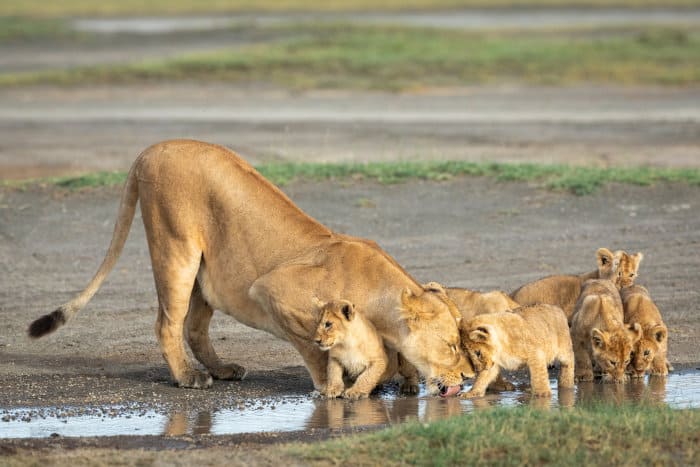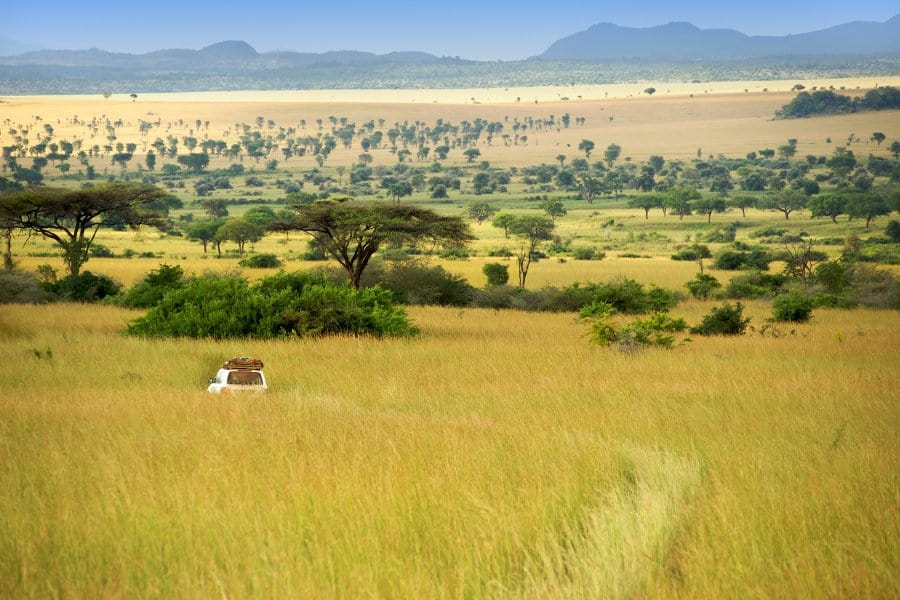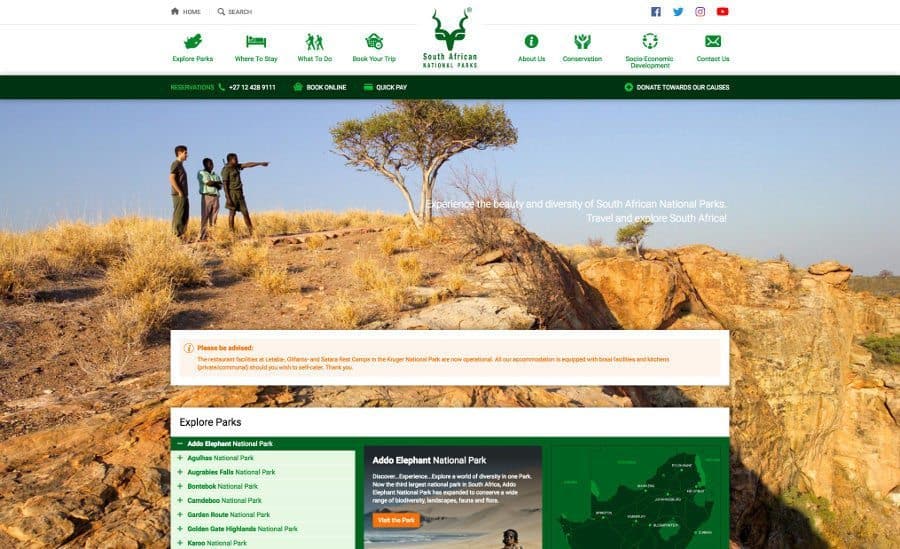Exploring the beauty inside national parks provides a serene experience. While treating these natural havens with respect is essential, you may be unaware of some of the do’s and don’ts in national parks.
Don’t worry: simply seeking the information shows that your heart is in the right place.
These national park rules and regulations aim to protect wildlife and preserve the environment for future generations.
From harming animals to staying in undesignated areas, some actions disrupt the harmonious living and atmosphere in the parks.
In this article, you’ll find some of the most important prohibited behaviors in national parks.
What is Allowed in National Parks? Do’s
Before jumping into the activities not allowed in national parks, let’s take a look at some things you can partake in when visiting.
These reminders and tips can help to make your African safari all the more enjoyable.
Pack appropriate clothing and essentials

Planning is essential in many aspects of life, and proper packing for a safari is crucial for a spectacular and comfortable experience.
It helps you prepare for unpredictable weather conditions and varying terrain. So you can focus on immersing yourself in the scenic surroundings during your trip.
Bring comfortable safari clothing and gear up for your outing in the bush. Don’t forget your insect repellent, a good torch, sunblock and a hat, a pair of binoculars, and your latest camera equipment!
Pay the park’s entrance fee and safeguard your permit
It’s important to pay your entrance fee and keep your permit with you at all times. These fees contribute to the park’s conservation efforts and assist with the maintenance of the environment.
Generally, you can find rates and permit requirements information via the respective national park’s official website.
Many also offer online platforms to make payments in advance, providing you with hassle-free entry upon arrival.
Alternatively, you can usually pay fees at the park’s entrance gates and office.
In addition to the payment, carrying your permit with you while exploring is essential. It serves as proof of payment and provides access to designated areas within the park.
Capture photos

Take as many pictures as you want and experience the peace and calmness of the African bush.
If you want to upgrade your photography equipment for the perfect picture, check out these cameras for a safari.
Capturing the moment and the mesmerizing beauty of the diverse wildlife and landscapes is a fantastic way to preserve memories.
For inspiration on creating your visual diary, have a look at these safari photo tips.
Admire the wildlife and have fun
Enjoy the wildlife and Africa’s exquisite sunset with a cup of tea, biscuits, or a nice cold beer. There are so many African animals to observe, from the mighty mammals on the ground to the beautiful birds soaring in the sky.
Allowed activities in national parks include:
- Guided game drives and walks
- Camping (only in designated areas)
- Mountain bike trails (not in Big 5 areas)
What is Not Permitted in National Parks? Don’ts & Rules to Remember
Now that you know more about what you can enjoy, it’s time to look at what is not allowed in national parks.
Below are some essential “don’ts” and rules to keep in mind when visiting.
Pet free zone

Pets are not allowed inside any African national park as they may interact, harm, or get harmed by the local fauna.
Gun free zone
For obvious reasons, guns are also forbidden. The only people who are allowed a gun are the local guides, game rangers and some members of staff.
Keep a safe distance from wildlife

Don’t interplay with wild animals. NB: Touching the game is banned!
Remember, wild animals need space, and getting too close can change an animal’s behavior. For your safety and their serenity, it’s best not to approach wildlife in a way that disturbs them.
Do not feed the game (as they may get sick). Feeding wild animals also establishes a dependency cycle, and this is definitely not how things ought to be.

It can lead to aggressive animals and potentially result in authorities putting them down.
Feeding animals in national parks is a big “don’t,” and you can face a heavy fine. These creatures have their own dietary needs and feeding patterns.
So leave the feeding to the experts, and keep a respectful distance when viewing wildlife.
Stick to approved routes
Only drive on allowed roads. There are various sources and signs that provide information on designated routes in Africa’s national parks.
You can find information on designated routes via national park authorities, visitor centers, and official websites. Be sure to grab a detailed map of the area before exploring.
Hanging out of vehicles/unattended walks are forbidden. Inadvertent tourists are looking for trouble.
Tip: Familiarizing yourself with the allowed roads can help when planning a safari, especially for first-time visitors.
Only stay overnight in permitted areas

Overnight stays are only allowed in designated areas (camping areas, lodges, etc.).
If you’re unsure where to stay on your adventure in the wild, check out these options for safari accommodation.
Camping is an excellent choice if you prefer to stay in the heart of nature and fully embrace the sights, sounds, and ambiance.
For more information and inspiration, read about the top reasons safari camps are special.
Drive responsibly
Overspeeding is not accepted. In most national parks, the allowed speed is between 20 and 50 km/h max.
The speed limit on tarred roads is usually 50 km/h (31 m/h), on gravel roads it’s 40 km/h (24.8 m/h), and in Rest Camps it’s 20 km/h (12.4 m/h).
20-30 km/h is generally the best recommendation for an optimal game viewing experience.
Adhere to the national park’s operating hours

National parks have strict opening/closing hours. These operating hours ensure visitors’ safety and conservation of the natural environment and wildlife. So, make sure you leave the park entry before dark.
If you’re looking for information on the opening and closing hours, visit the respective national park’s official website or contact the office for up-to-date information.
This will allow you to plan your itinerary accordingly and maximize your time.
Minimize noise
Keep your noise levels low at all times (especially at night). Noise is a nuisance to both guests and animals.
Refrain from playing music loudly in national parks, as it disrupts the tranquil atmosphere. Intentionally playing music or making loud sounds to get animal reactions is also a big no-no.
While you can pop in your headphones to listen to music, why not treat your senses to the peaceful sounds in the wild? With low noise levels, you can calmly observe and appreciate animals in their natural habitat.
Avoid intoxicated behavior

Drunken behavior is not tolerated, and alcohol may not be consumed in public areas or in your private vehicle.
Act responsibly and do not harm the environment
What you see in a national park must remain that way. In other words, removing firewood or disrupting the flora is an absolute no-no.
These actions are strictly prohibited and can disrupt the balance of the ecosystem. Instead, embrace the park’s beauty and take photos of the plants and picturesque surroundings.
Additionally, smoking/making a fire is outlawed. Remember, the risk of accidental wildfire is high. Smoking threatens other visitors, wildlife, and the park’s vegetation.
Many sources indicate the harmful effects of secondhand smoke, so respect those around you by not smoking within the park’s boundaries.
Dispose of waste properly

Do not litter. Adhering to the national park’s guidelines on proper waste disposal is vital to preserving the area’s natural beauty.
When visiting, stick to using the designated trash bins and recycling facilities. Don’t forget to look around before leaving a spot to ensure no litter is left behind.
SANParks Rules and Regulations Illustrated (VIDEO)
Remember the Do’s and Don’ts in Parks When Visiting
There you have it, some of the most important do’s and don’ts in national parks. By being mindful of these rules and regulations, you can enjoy a spectacular and sustainable experience in the wild.
In addition to respecting the park, you’ll also contribute to the peaceful observation of other safari goers. So be sure to share this information with a fellow adventurer.
From sticking to designated roads to picking up after yourself, these are some simple actions you can practice to have the best safari trip.
Now that you know the do’s and don’ts in the park, all that’s left to do is plan your itinerary, book your African safari, and get ready for an exciting journey.
“Safari njema” (have a nice trip)!




Good day , please can you let me know the regulations regarding filming in national parks (for commercial purposes) as well as who gives permissions for the flying of drones inside national parks